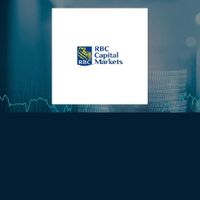In April 2025, the Royal Bank of Canada (TSX:RY) finds itself in a challenging position as its shares have dipped 12% from all-time highs, reflecting broader market trends impacted by trade war escalations and sluggish consumer spending. Despite this pullback, analysts and investors are keeping a close eye on the bank, which has historically provided significant returns to shareholders.
Since January 1995, RBC has returned an impressive 2,300% to shareholders, and when factoring in dividend reinvestments, cumulative returns soar to nearly 7,000%. With a current market capitalization of $223 billion, RBC stands as the largest company trading on the Toronto Stock Exchange (TSX).
During its 2025 Investor Day, RBC's leadership unveiled an ambitious growth strategy aimed at bolstering its presence both in Canada and internationally. Chief Executive Officer Dave MacKay outlined a target for a premium return on equity (RoE) of over 16% by 2027, with aspirations for an upside of 17% through optimized capital deployment.
The bank’s strategy is built on four key pillars: increasing market share in Canada, expanding into global fee pools, executing a seamless U.S. operating model, and leveraging investments in data and artificial intelligence (AI). RBC anticipates generating between $700 million and $1 billion in enterprise value from its AI initiatives by 2027, a significant move that underscores its commitment to technological advancement.
RBC's Personal Banking segment is particularly aggressive, targeting 2.4 million net new clients over the next five years while maintaining a robust 25% RoE. The Commercial Banking division boasts a commanding lead in Canada, with a 500+ basis point advantage over competitors, while achieving an impressive efficiency ratio of 34%.
In Capital Markets, RBC aims to increase its global market share from 2.1% to 2.5% in Global Markets and from 2.3% to 2.75% in Investment Banking. Additionally, the bank plans to enhance its transaction banking capabilities, targeting over 350 clients and $50 billion in deposits.
Wealth Management is another area of focus, with plans to add 600 new advisors in the U.S. over the next five years. RBC is targeting growth in assets under administration (AUA) to between $3.2 trillion and $3.4 trillion, and assets under management (AUM) to over $1.1 trillion, supporting a pretax margin of 29%.
Moreover, RBC aims to improve its RoE from 9% to 12% for its U.S. operations, with expectations for an efficiency ratio improvement from 83% to the low 70s by 2027. Chief Financial Officer Catherine Gibson has outlined a pathway to achieving a 53% all-bank efficiency ratio by 2027, down from the historical average of 57%.
In terms of revenue, RBC expects high single-digit growth in net interest income, excluding trading, over the next three years. The bank's interest rate hedging strategy is projected to yield a gross hedge revenue increase of approximately $1.5 billion by 2027.
Analysts are optimistic about RBC's stock potential. Adjusted earnings per share are expected to grow from $12.09 in fiscal year 2024 to $14.43 in fiscal year 2026. Based on a trailing earnings multiple of 13, RBC's stock could be valued at around $188 by April 2025, suggesting an upside potential of nearly 20% from current levels.
Furthermore, RBC offers shareholders an annual dividend of $5.92 per share, which translates to a forward yield of 3.8%. Analysts forecast this payout to rise to $6.40 per share in fiscal 2027, indicating continued commitment to returning value to investors.
Recent institutional investment activity reflects confidence in RBC's long-term prospects. Dynamic Technology Lab Private Ltd increased its position in RBC by an impressive 81.9% in the fourth quarter, holding 26,720 shares valued at $3.22 million. Other notable investors include Norges Bank, which acquired a stake worth approximately $2.43 billion, and Geode Capital Management LLC, which lifted its holdings by 31.2% during the same period.
Vanguard Group Inc. and Connor Clark & Lunn Investment Management Ltd. also made significant adjustments to their positions, reinforcing the notion that institutional investors are betting on RBC's recovery and growth trajectory.
As of April 4, 2025, RBC stock opened at $111.13, with a 12-month low of $95.84 and a high of $128.05. The stock's performance has been closely monitored, particularly as the financial services sector navigates economic uncertainties.
In a recent quarterly announcement, RBC declared a dividend of $1.0251 per share, to be paid on May 23, 2025, with shareholders of record on April 24, 2025. This dividend represents an annualized payout of $4.10 and a yield of 3.69%, with a payout ratio currently at 45.96%.
Wall Street analysts have been vocal about RBC's prospects. StockNews.com recently upgraded RBC from a "sell" to a "hold" rating, while CIBC raised its rating from "neutral" to "sector outperform." The consensus rating for RBC currently stands at "Moderate Buy," with a target price of $156.50, indicating a generally favorable outlook.
As RBC navigates through these market fluctuations, the bank's strategic initiatives and strong institutional backing may play pivotal roles in its recovery and growth. Investors are left to ponder: is now the right time to buy into one of Canada’s leading financial institutions?





